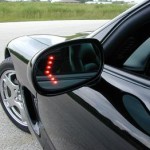By Arne Cherkoss
The short answer is, yes.
Oregon law requires the use of turn signals
 Every day I see drivers who fail to use their turn signals. I’m not sure if they are aware that Oregon law requires the use of turn signals. Notwithstanding the law, it just makes good sense to let other motorists and pedestrians know what you are doing while driving.
Every day I see drivers who fail to use their turn signals. I’m not sure if they are aware that Oregon law requires the use of turn signals. Notwithstanding the law, it just makes good sense to let other motorists and pedestrians know what you are doing while driving.
Oregon statutes require drivers to give certain turn signals before turning their vehicles and/or changing lanes. A driver may not turn or change lanes from a direct line of travel upon a highway, road, or street, when movement cannot be made with reasonable safety or when the driver fails to give an appropriate signal continuously for at least 100 feet before turning or changing lanes.
Appropriate turn signals
The appropriate signal is either by turn indicators or by hand and arm. If the signal is given by turn indicators, the driver must activate both front and rear lamps on that side of the vehicle toward which the turn or lane change is made.
If the turn signal is given by hand and arm, the signal is as follows:
- For a left turn, a signal is given by extending the left hand and arm horizontally.
- Whereas a right turn is signaled by extending the left arm with the forearm and hand pointing upward.
Failure to properly signal a lane change or a turn is a traffic violation. Drive safe out there and remember to use your turn signals.
Additional Wikipedia Notation: Turn signals — formally called “directional indicators” or “directional signals”, and informally known as “directionals”, “blinkers”, “indicators” or “flashers” — are signal lights mounted near the left and right front and rear corners of a vehicle, and sometimes on the sides, used to indicate to other drivers that the operator intends a lateral change of position (turn or lane change).

